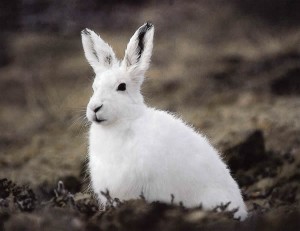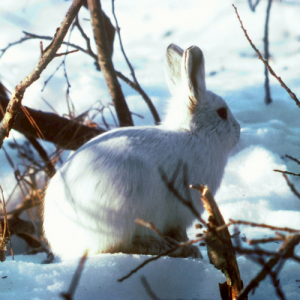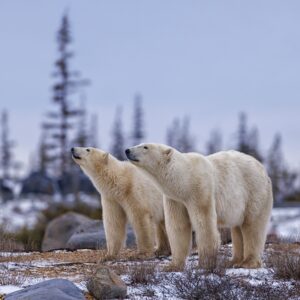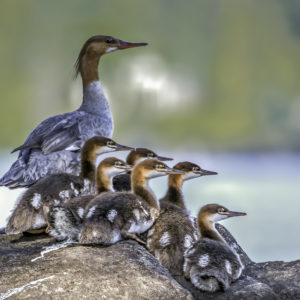Easter in the Arctic

Blair Scott,
Professional Writing Intern
Blog written by professional writing interns Blair Scott and Amanda Simard.
 How much do we really know about the Easter Bunny? Is it a bunny at all?
How much do we really know about the Easter Bunny? Is it a bunny at all?
Meet the Arctic Hare! You will find this hardy, little creature frolicking in the snow and bouncing about the tundra. One glance at this adorable, white ball of fur may well leave you wondering: Is the Easter bunny actually an Arctic Hare?
In Canada, the Arctic Hare (Lepus arcticus) is found in Newfoundland and Labrador, as well as Nunavut and the Northwest Territories. During the winter, these hares are white. Come spring, their fur changes to a blue-gray or brownish colour, though hares found in the northernmost part of the range do stay white all year long.
When it comes to its habitat, the Arctic Hare is adaptable. That said, it prefers a dry environment over moist or marshy areas, and it tends to avoid deep snow. You are also more likely to spot an Arctic Hare resting on the open tundra-terrain than lounging under the trees.
The Arctic Hare is well-adapted to the cold and it doesn’t hibernate in the winter. Though the climate is milder in the spring and summer, this hare weathers even the harshest winter temperatures of the Canadian tundra. Numerous adaptations are responsible for its remarkable resilience. These include: [one_third]
 [/one_third] [two_third_last]
[/one_third] [two_third_last]
- A thick fur coat, which provides both warmth and camouflage (blending with the winter snow or spring vegetation)
- Shortened ears – the compact size taking up less space and conserving body heat
- A tendency to stay grouped in herds, which offers some protection against predators
- Their speed – they can bounce at a rate up to 60 km/h and as far 2.1 m in one launch
- Their 360° view, thanks to their sharp peripheral vision
- Their instinct to point their gaze upwards while resting or foraging on a hill.
- Their large back feet, which act like snowshoes, keeping them on the surface of the snow
- Their fast maturity from birth – Arctic Hares mature in size a couple of months after they are born and they can reproduce a year later
- Their ability to find and dig up food in the snow thanks to their strong sense of smell – their diet consisting of woody plants, mosses, lichens, buds, berries, leaves, roots and bark [/two_third_last]This Easter, as you ponder just who hid those chocolate eggs, take a look out the window and see if you spot an Arctic Hare! Who knows? With their resilience to winter temperatures, they just might pop down south once a year to leave behind tasty treats!
Which rabbit or hare species make up your top “Easter Bunny” candidates? Let us know it the comments, or share pictures on Facebook or Twitter of the long-eared creatures visiting your backyard!



